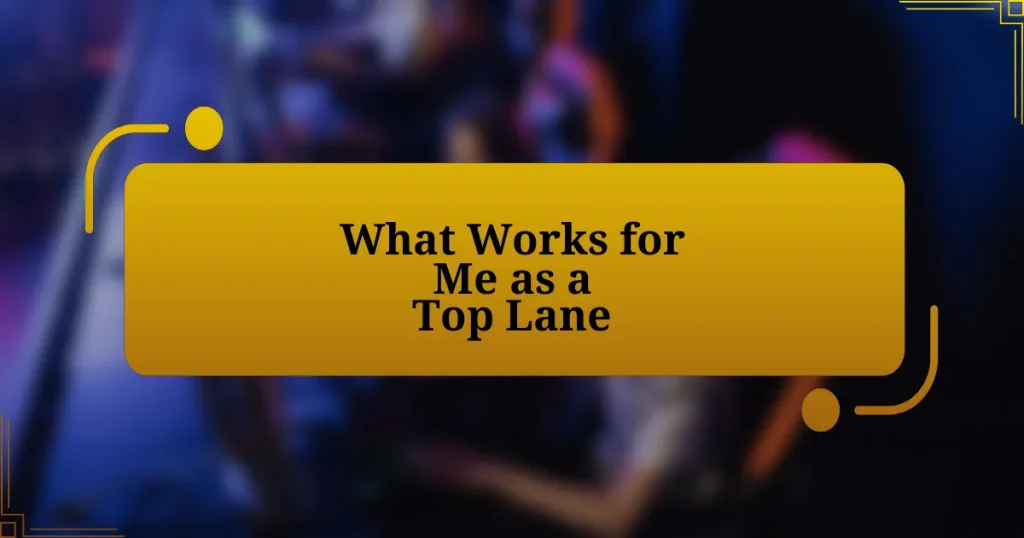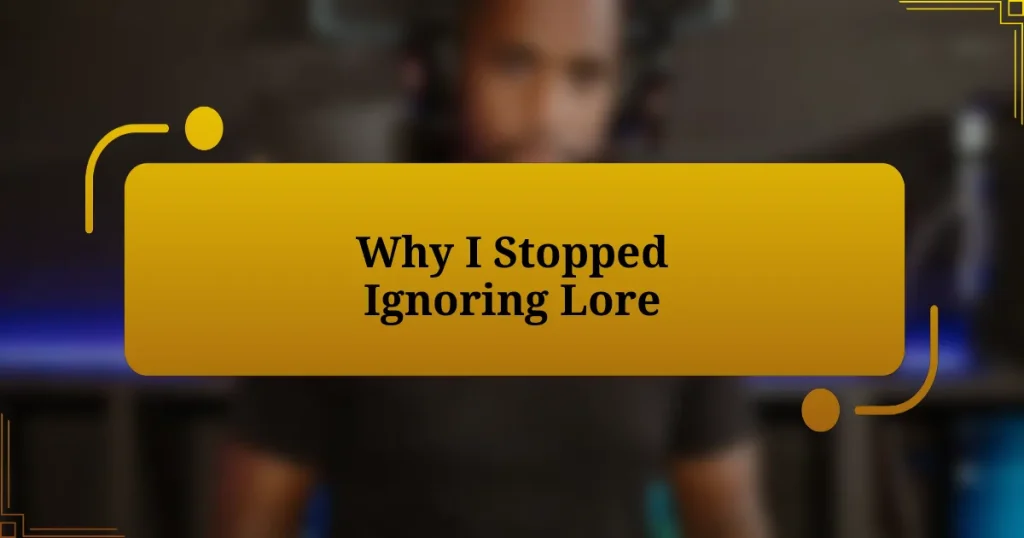Key takeaways:
- Farming efficiently and balancing aggression with defense distinguishes average top laners from great ones.
- Map awareness and strategic warding are critical for avoiding ganks and providing valuable information to teammates.
- Adapting playstyle based on team composition, such as switching to a more defensive role when needed, enhances team dynamics.
- Effective roaming and knowing when to leave lane can significantly change the momentum of the game.
Author: Clara M. Ashford
Bio: Clara M. Ashford is an award-winning author known for her captivating literary fiction that explores the complexities of human relationships and the intricacies of personal identity. With a background in psychology and a passion for storytelling, Clara weaves rich narratives that resonate with readers on a profound level. Her debut novel, Whispers of the Heart, garnered critical acclaim and was shortlisted for the National Book Award. When she’s not writing, Clara enjoys hiking in the mountains of Colorado and volunteering at local literacy programs. She lives in Denver with her two adventurous dogs.
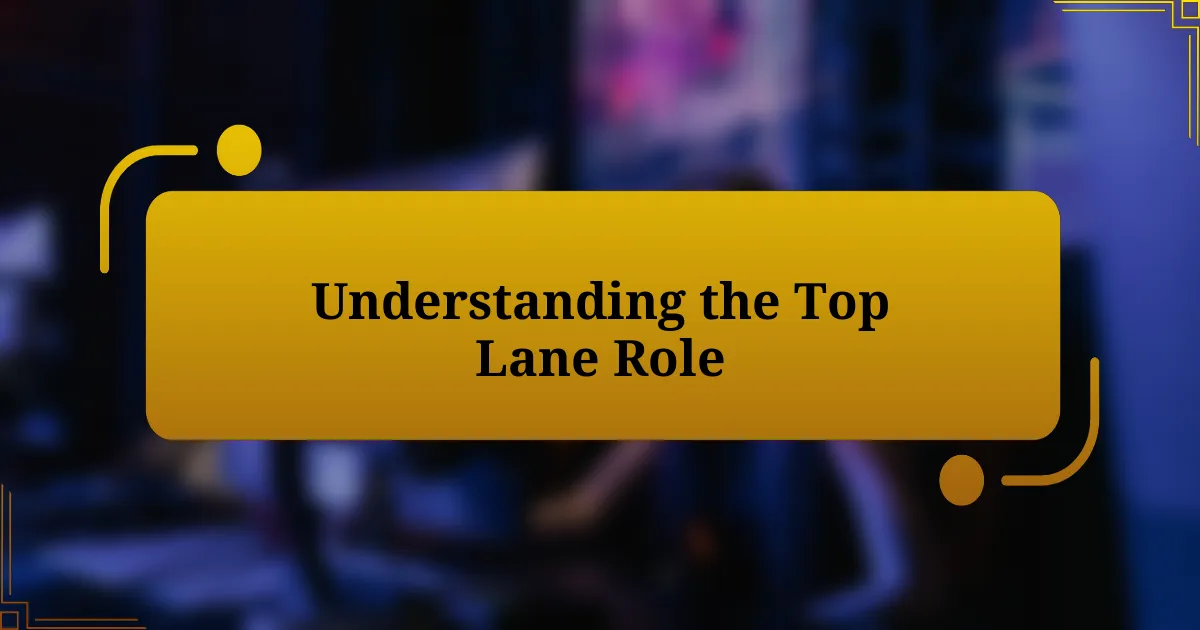
Understanding the Top Lane Role
The top lane plays a crucial role in League of Legends, serving as a solo lane that demands not only skill but also strategic thinking. I remember when I first ventured into top lane; I felt like I was on an isolated island, completely responsible for my success or failure. It forced me to adapt quickly and learn how to manage pressure, both from the enemy and my teammates.
Farming efficiently is a core component of being a successful top laner. Early on, I often struggled to balance farming and trading with my opponent. Have you ever found yourself thinking, “Should I go for that last hit, or should I poke my enemy?” I’ve realized that mastering this balance is what truly sets apart average players from great ones. It’s not just about getting kills; it’s about understanding when to go aggressive and when to play defensively.
Additionally, as a top laner, map awareness is essential for transitioning into the mid and late game. I recall a match where I made a split-second decision to teleport back into a team fight, turning the tide for my team. Those moments can define a game, and always keep in the back of your mind: how can I impact my team beyond my lane? The answer lies in your ability to read the game and make informed decisions quickly.
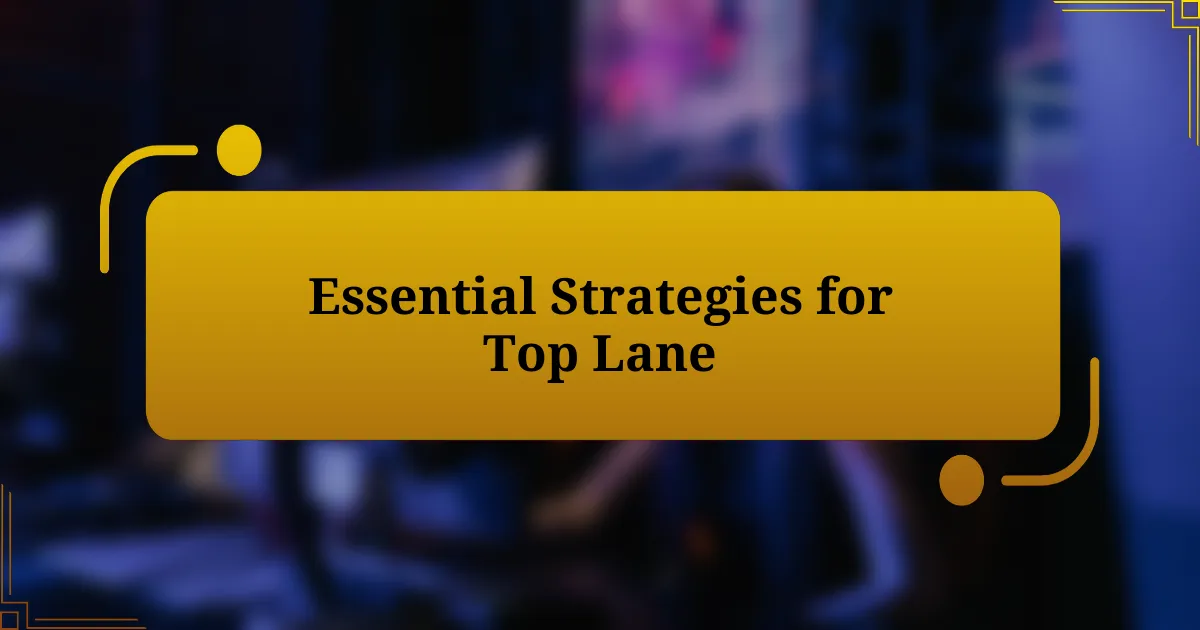
Essential Strategies for Top Lane
When it comes to trading in the top lane, knowing your champion’s strengths and weaknesses is vital. I still remember a game where I played Gnar against a Renekton. I thought I could trade effectively at level three, but I quickly learned that underestimating Renekton’s early damage was a mistake. Understanding your champion’s power spikes can give you the upper hand during crucial moments.
Warding is often overlooked, yet it can be a game-changer. In one of my matches, I placed a control ward in the river, only to spot the enemy jungler setting up for a gank. That foresight allowed me to back off safely, avoiding what could have been a disastrous trade. Have you ever considered how much more confident you’d be if you constantly had vision of potential threats?
Finally, mastering the timing for teleporting is a skill that separates the good top laners from the great ones. There was a moment when I chose to teleport to save a turret during a skirmish. It not only secured the objective but also picked off an enemy champion in the process. Learning when to make that crucial decision impacts more than just your lane; it can dictate the flow of the entire game. Are you ready to take your top lane strategy to the next level?

Map Awareness and Roaming Tips
Map awareness is one of those skills that can elevate your gameplay significantly. I recall a game where I was playing Shyvana top lane, and I took a moment to glance at the mini-map. I noticed both the mid laner and jungler missing, which prompted me to play safer and ward my river. This simple act of paying attention not only saved my skin but also provided vital information for my teammates.
Roaming effectively as a top laner is about timing and knowing when to leave your lane without sacrificing too much. There was a point when I pushed my wave hard with Fiora, then warded the river before heading mid. Catching the enemy mid laner off guard led to a kill and helped secure a dragon. Have you ever thought about how often a well-timed roam can turn the tide of the game? It’s moments like these that can really change not just your lane dynamics but the match itself.
Another key aspect is learning to differentiate when it’s safe to roam versus when to stay put. I remember a game where I stayed too long in lane against a Darius with a lead, thinking I could force a play. Instead, I found myself ganked and out of the game for several minutes. It’s crucial to weigh your options constantly. Are you monitoring not just your lane but also how your teammates are faring? Effective map awareness can mean the difference between feeding or securing kills.
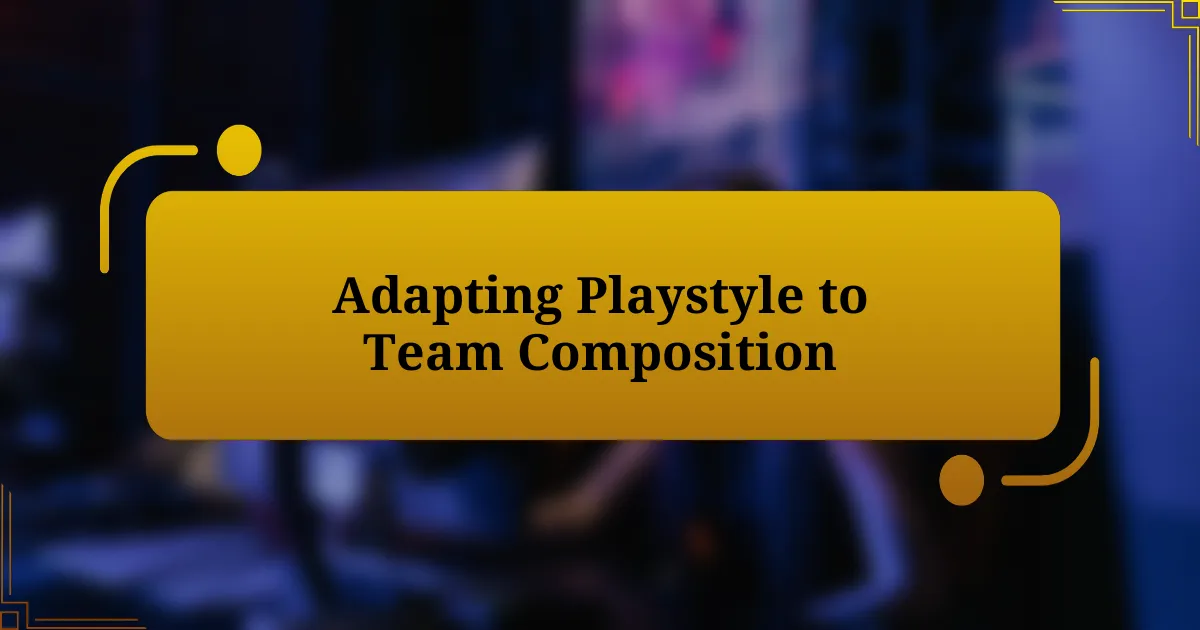
Adapting Playstyle to Team Composition
Understanding how to adapt my playstyle based on team composition has been crucial in many of my games. There was a time in a ranked match where I was playing Malphite. My team was heavy on damage but lacked crowd control. I decided to shift my focus and play more defensively, opting for a tankier build to absorb damage and initiate fights. This shift not only helped balance our team dynamics but also turned me into an unexpected team glue.
I’ve also experienced how synergy with a specific team composition can shape my approach. In one memorable match, I was paired with a support who thrilled me by picking Leona. I knew immediately that my aggressive playstyle needed to change; instead of trading blows with my opponent, I focused on setting up plays for her. By timing my engage with her ult, we secured several kills, and I felt the thrill of how our coordinated efforts could dismantle the enemy. Isn’t it fascinating how understanding your team’s strengths can unlock new strategies?
The emotional aspect of adjusting my playstyle cannot be overlooked either. I once found myself in a game where my AD carry picked a hyper-carry but fell behind early. Instead of pushing my advantage in lane, I decided to play more defensively and help cover their cooldowns during fights. That sense of responsibility taught me the importance of adaptability, not just in terms of gameplay mechanics but also in supporting my teammates emotionally. Have you ever felt that shift in your mindset when you realize the best move for the team might not be the best for yourself? It’s a learning curve that many players go through, and each experience adds layers to your understanding of team composition.











